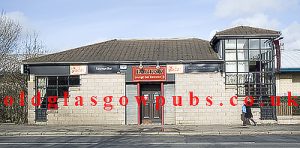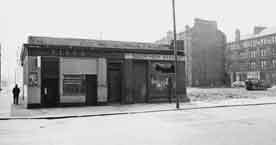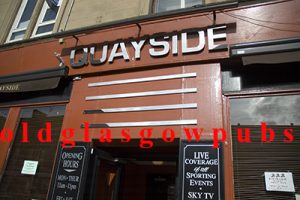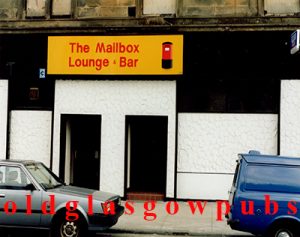249-51 Paisley Road, Glasgow.
The Roseneath Cottage was established around the year 1850, and stayed unchanged until it was finally demolished in the wave of the city improvement trust. Charles Scobie the founder of the business, witnessed many of the changes in Tradeston, all the old buildings came down and new tenements were erected on the old sites, but the Roseneath Cottage remained unchanged.
The probability is that it existed far away back in the Jacobite era and that when Prince Charlie and his troops raided the city for boots and shoes and victuals on their victorious march from the south on the way to the ill-fated Culloden Moor, that Roseneath Cottage, under a different name flourished.
In 1891 a gentleman who had gone to Canada sixty years ago returned to the old country and revisited the scenes of his youth, amongst then Roseneath Cottage, he said to the manager at the time, “that little change in the place. I remember every neuk in the hoose after sixty years. The vacant ground behind the main building had been utilised, but the fountain remains, and sparkles as brightly in the sunlight as it did when the first jet of water ascended from it eighty years ago.” The vacant ground had a peculiar history.
Back in the time when quoiting was a favourite pastime, many a game was played behind the Roseneath Cottage. Champion players, men whose names were still remembered, turned up here.
The old part of the house remains intact, and the additions made do not detract from its ancient appearance. The old rooms, two of them unique so far as the ceilings were concerned, were still preserved in their pristine glory. The ceilings of the two referred to were artistically done up with shells and cones of the fir and the spruce.
The figures represented in the design must have been drawn by one who had a keen and appreciative eye for the beautiful. The cones and shells were now blackened with age, but even time has failed to mar the effect of the work, which must have entailed considerable labour.
The bar in the Roseneath Cottage was decorated with trophies of every kind. In the extreme west corner there was a case of ptarmigan, the lone habitants of the great herbless peaks of the Grampian chain.
There was also specimens of the owl, the wild duck and many other wild birds. Perhaps the most attractive of all the bird cases is that containing a pheasant cock and hen, with their brood. There is no doubt, in the city of Glasgow one will find such a fine collection of birds.
There was also a collection of flint guns, strange looking pieces of fire arms, giving the place an air of far off times, an impression which will never fade from the memory of a visitor. This was an old Glasgow hostelry full of character.
All the best liquor was stocked in the Roseneath Cottage, the establishment was run like clock-work, all the waiters had a code of dress, god forbid the man that forgot his uniform, which consisted of a brilliant white starched shirt, black tie and shoes and not forgetting the brilliant white apron.
These white aprons tied at the back and the front had a button hole that attached to the shirt. Throughout it’s history the Roseneath never left the Scobie family. When Charles Scobie died his son Charles took over the running of the business.
All the bottling was done on the premises as well as the blending of whisky, a specialty was of course the Roseneath blend of old Highland. The licence was then taken over by Miss Janey Bell Scobie in 1901 and during the First World War Margory Rollo Scobie was in charge.
Women running pubs was not unusual during war times as all the men were usually fighting for their country. The Roseneath Cottage was demolished shortly afterwards. Miss Marjory Rollo Scobie served the locals until around 1910.
















